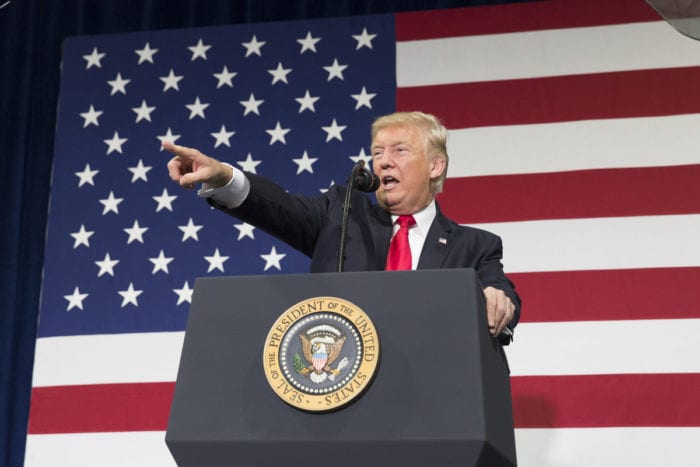
This is a quest for knowledge, clearer thinking, and better interventions.
Two sides of the American psyche were on display last week.
On one side, President Biden’s executive orders to address systemic racism highlight our intention to rid ourselves of racism and embrace the idea of becoming a multicultural nation. These Presidential actions provide momentum and some measure of validation for those of us who have been fighting for social change.
On the other hand, Senate Republicans signaled against impeaching former President Trump, the inciter of an insurrection which ended in death and national humiliation.
This latter action represents the reinforcement of white supremacy, and the other side of our national psyche.
Since the insurrection, it should be clear that white supremacy represents an existential threat to our country. Yet getting rid of it remains a complex problem that is deeply boroughed in the American consciousness. Millions of Americans continue to subscribe to a viewpoint that says the results of the election are invalid. Among other things, such positions are ignorant or in denial of the fact that many Black voters cast their ballots under the most adverse conditions in public memory—pandemic, threats of violence, legalized voter suppression—mustering the political strength to win.
Everything we’ve seen suggests there is sufficient political power to actively undermine any attempts to become a multicultural nation. This leaves room for Trump 2.0, which would likely be a much more competent, ruthless version of the man who revealed the depth and breadth of American racism.
White supremacy has a hold on the American identity for far too many people. It’s part of the American story, sustained through coded language used in Republican victories in eight of thirteen presidential elections since 1968. The strategy is not new, and has been documented as far back as 1969, in the book The Emerging Republican Majority by ex-Nixon staffer Kevin Phillips.
Trump brought these tactics to the forefront, to the point that he welcomed and even unleashed violence on certain communities. Many have died by the hand of white supremacy, and more will die still, a lot of it due to the lack of political courage on the part of the national Republican Party.
Unfortunately, we cannot simply move beyond this moment. It requires staring it down with cold, hard analysis, and understanding white supremacy in the context of a multicultural society. It must be studied as a psychological and anthropological problem, as well as a moral, historic, legal, theological, ethical, and political concern. White supremacy must be consistently named, rigorously defined, and discussed as we develop strategies to dissipate its power. This is not propaganda. This is a quest for knowledge, clearer thinking, and better interventions.
This work has to be coupled with attention to what it means to be a multicultural society. It’s multidisciplinary work, requiring an understanding of psychology, anthropology, politics, law, theology, and ethics. White supremacy is an aspect of foreclosed American identity, reflexively accepted as the norm without critical thinking. To find alternatives to white supremacy, we must reimagine what it would mean to live in a society that honors Native American Tribal sovereignty, for example, or that pays agricultural workers a fair wage, or where Black teenagers live in communities are truly safe.
Multiculturalism is something new for the United States. Globalization turbocharged multiculturalism upon the collective psyches of many without their consent. It led to unbridled capitalism, declines in real wages, and a growing wealth gap. This aggressive stripping of cultural and economic assets led to a backlash among many white Americans. We see this in the emergence of populist/nationalist movements in the United States and Europe.
An inherent part of recasting America as a multicultural nation is taking meaningful action. National service is one strategy, if it is implemented in a way to intentionally facilitate cross-cultural understanding. White people and people of color must feel a sense of agency as they work together to address big and small problems. Agency sets the stage American identity to adopt a truly multicultural outlook. The efforts to dismantle white supremacy and efforts to promote the United States as a multicultural nation must operate in parallel.
To condemn white supremacy without substituting it with something else will simply harden their ranks. Multicultural action should be cultivated, recognized, celebrated, and incentivized in order to become a viable substitute for white supremacy. At the same time, white supremacy must be ground down, diluted, and ground down again, dissolved, and ground down again and dissolved again until it is a weak, diluted feature in the American consciousness.
This will happen through persistent study, action, and reflection on all fronts. We need to hold people accountable. While it is unwise to reject people who hold these views, we cannot hesitate to sanction and isolate those who are dangerous to the functioning of our multicultural society.
This is a long-term project. American multicultural instincts must be cultivated and strengthened, and we must design innovative strategies along this path. If we are to be a multicultural nation, we must also embrace the developmental need for racial and ethnic identity while providing agency in this collective way.
This is new territory for the United States, and the journey focuses on one question: What does it mean for American to become a truly inclusive, multicultural society? The challenge is to live in the conviction that multiculturalism strengthens our democracy.
Daryl Wright is Chief Strategy Officer at the Emerald Cities Collaborative. He lives and writes from his home in Dorchester. for He has worked at YouthBuild USA and community-based organizations in Roxbury and Dorchester. Daryl has a master’s degree in Urban and Environmental Policy and Planning from Tufts University

